-
article · 2025Year20Moon3Day
Opentrons Flex 与传统手动操作相比效率有多高?
Read More -
article · 2025Year13Moon3Day
Flex 工作站如何实现实验室废料自动清理?
Read More -
article · 2025Year22Moon2Day
如何利用 Flex 提高蛋白质组学实验的重复性?
Read More


The open source hardware movement has long championed the right to repair, the importance of full ownership of the technology you buy, and the ability to remix and reproduce gadgets, just like you can with music. So during this challenging time, open hardware is providing some answers to some of the questions caused by the coronavirus pandemic.
For one, hardware developers around the world are working to leverage open source to address supply chain vulnerabilities, the same philosophy that has driven the proliferation of new software technologies over the past 30 years. The hardware movement’s past successes include the RepRap project, the open source ecosystem, and the open source beehive, proving that it can be done.
There is growing interest in using 3D printing and other technologies to create replacement parts and manufacturing of safety equipment on demand. For example, the Hong Kong Polytechnic University laboratory provides 3D printed face shields for hospital staff. Italian startup Isinnova has teamed up with Milan’s FabLab to create 3D printed replacement valves for resurrection equipment in hard-hit northern Italy. Companies are also releasing designs that adapt to our physical interactions, like this 3D printed hands-free door opener from Materialize. These examples of replacement parts and problem solving are a great start and appear to be saving lives.
Another traditional hardware skill is booming: sewing. Agence France-Presse reported that masks are urgently needed around the world, and the World Health Organization has also provided guidance on their importance. As health care workers prioritize the use of disposable masks, in the Czech Republic, people are starting to sew their own masks. (Reusing masks does pose sterility issues.) The Facebook group Czech Sewing Masks set out to address this issue in their country, with tens of thousands of members using their home sewing machines.
Open source hardware devices and machinery projects are also gaining traction. First of all, the testing equipment is sophisticated and capable. Next, for situations where there are no other options, medical devices can be classified as field grade (at best). A detailed overview of these projects is provided below.
To learn more, I spoke with Jason Huggins, founder and CEO of Tapster Robotics in Chicago. Tapster Robotics designs and builds tabletop robots using 3D printing, computer numerical control (CNC) machining, and open electronics like Arduino. He has the technical knowledge and industrial ability to make an impact. He hopes to devote the company's resources to helping the fight.
"Basically, we're in a mobilization moment for World War II right now. Even if I'm not a doctor, we should still abide by the Hippocratic Oath. No matter what I do, I don't want to make the problem worse," Huggins explained. "By contrast, WHO Executive Director Dr. Michael Ryan's comments were: 'Speed beats perfection,'" Huggins argued.
Huggins has extensive experience providing services when needed. His efforts were instrumental in helping Healthcare.gov scale after a challenging initial launch. He also created Selenium and Appium, the software industry standard testing frameworks. After this experience, his advice is well worth considering.
I also spoke with Mark Tyson, a Seattle-based attorney at Tyson Law Firm who works with startups and small businesses. He has direct experience working with agile companies in rapidly growing industries. Asking the overarching question, Tyson began:
Good Samaritan laws protect volunteers, known as “Good Samaritans,” from being held liable for their decisions to provide aid in an emergency. While the specifics of these laws vary from state to state, they share a common public policy rationale: encouraging bystanders to help others facing emergencies. This rationale could conceivably justify the application of these types of laws in less traditional settings, other than pulling car accident victims out of harm's way.
In response to this specific situation, Tyson noted:
"Before taking action, creators would be wise to speak with an attorney to conduct a state-specific risk assessment. It would also be wise to require larger institutions (such as hospitals or insurance companies) to contractually accept potential liability risks, e.g., through With an indemnity agreement, the hospital or its insurance company agrees to indemnify the creator against their liability.”
Tyson understood the urgency and seriousness of the situation. This option to use contracts is not meant to be a hindrance; rather, it could be a way to aid mass adoption to have a greater impact faster. It's up to you or your organization to make this decision.
With that said, let's explore a project that is currently in use or under development (and may be ready for deployment soon).
Opentrons' open source laboratory automation platform consists of a suite of open source hardware, validated labware, consumables, reagents and workstations. Opentrons says its product can help significantly scale up COVID-19 testing, with its system capable of "automating up to 2,400 tests per day within days of placing an order." It plans to increase the number of testing samples to 1 million by July 1.
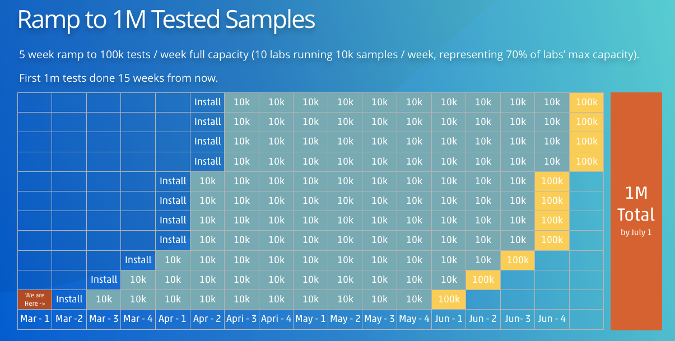
The company has worked with federal and local government agencies to determine whether its system can be used for clinical diagnostics under emergency use authorization. Opentrons is shared under the Apache 2.0 license. I first learned about this from Kristin Ellis, a biologist who worked on the project.
Chai Open qPCR
Chai’s open qPCR device uses polymerase chain reaction (PCR) to quickly test swabs of surfaces, such as door handles and elevator buttons, for the presence of the novel coronavirus. This open source hardware is shared under the Apache 2.0 license and uses the BeagleBone low-power Linux computer. Data from Chai Open qPCR can help public health, civic and business leaders make more informed decisions about cleaning, mitigation, facility closures, contact tracing and testing.
OpenPCR is a suite of PCR testing equipment developed by Josh Perfetto and Jessie Ho, founders of Chai Open qPCR. This is more of a DIY open source device than their previous project, but it has the same use case: using environmental testing to identify coronaviruses in the field. As the project page states, "Conventional real-time PCR machines capable of detecting these pathogens typically cost up to $30,000 and are not suitable for field use." Since OpenPCR is a user-built kit and shared under the GPLv3.0 license, the device is designed to In democratizing molecular diagnostics.
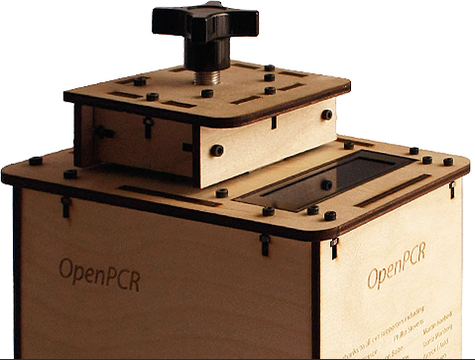
And, like any good open source project, there is a spin-off project! WildOpenPCR from Switzerland-based GaudiLabs is also shared under the GPLv3.0 license.
Gaudi Labs' PocketPCR thermal cycler is used to activate biological reactions by raising and lowering the temperature of liquids in small test tubes. It can be powered by a simple USB power adapter, can be connected to a device, or can be powered independently, and has preset parameters that do not require a computer or smartphone.
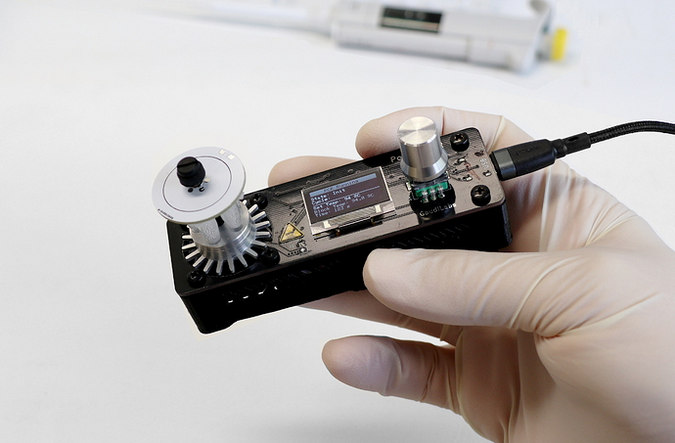
Like the other PCR options described in this article, this device may aid in environmental testing of coronaviruses, although its project page doesn't explicitly state this. PocketPCR is shared under the GPLv3.0 license.
The Open Lung Low Resource Ventilator is a rapid deployment ventilator that uses a bag valve mask (BVM) (also known as an Ambu bag) as the core component. Ambu bags are mass-produced, certified, small, mechanically simple, and suitable for use with invasive catheters and masks. The OPEN LUNG ventilator will use microelectronics to sense and control air pressure and flow, with the goal of semi-autonomous operation.
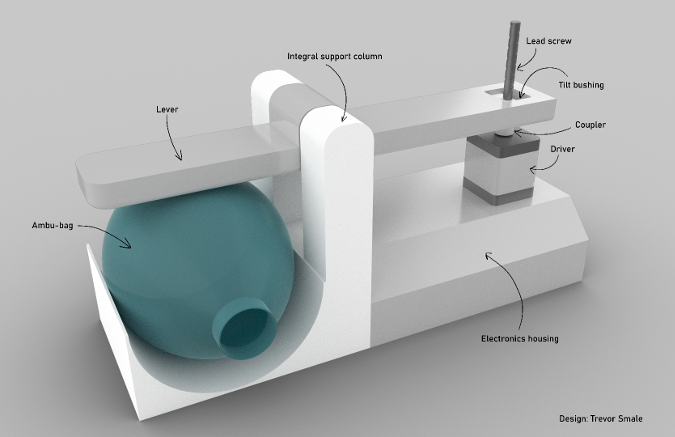
This early-stage project has a large team of hundreds of contributors, led by Colin Keogh, David Pollard, Connall Laverty and Gui Calavanti. It is shared under the GPLv3.0 license.
The Pandemic Ventilator is a DIY ventilator prototype. Like the RepRap project, it uses common hardware components in its design. Uploaded to Instructables over a decade ago by user Panvent, this project has six main steps. This project is shared under the CC BY-NC-SA license. This video shows the system in action:
Folding at Home is a distributed computing project for simulating protein dynamics, including the process of protein folding and the motion of proteins implicated in various diseases. It's a call for citizen scientists, researchers and volunteers to use computers at home to help run simulations, similar to the retired SETI@Home project. If you are a techie with powerful computer hardware, then Fold at Home is for you.
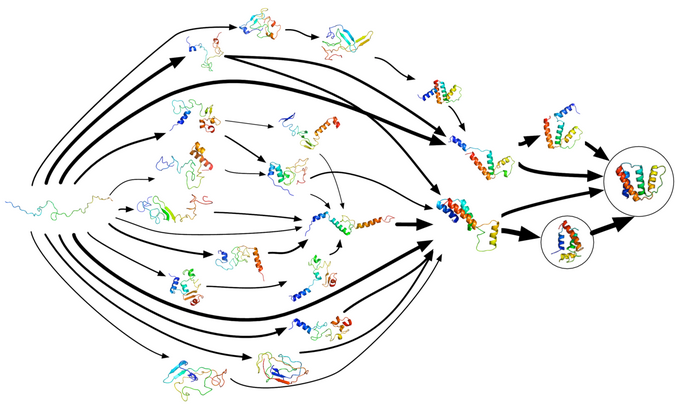
Folding at Home uses Markov state models (shown above) to simulate the shapes and folding pathways proteins may take to find new therapeutic opportunities. You can find out more about the project, how it works and how you can help, in this post from University of Washington biophysicist Greg Bowman.
The project consists of academic laboratories, contributors, and corporate sponsors from many countries, including Hong Kong, Croatia, Sweden, and the United States. Folding at Home is shared on GitHub under a mix of GPL and proprietary licenses, and is multi-platform for Windows, macOS, and GNU/Linux (e.g., Debian, Ubuntu, Mint, RHEL, CentOS, Fedora).
These projects are just a small sample of the activity in the open hardware space to address or treat COVID-19. While researching this article, I found other projects worth exploring, such as:
These projects are spread across the world and this global cooperation is exactly what we need because viruses know no borders. The coronavirus pandemic affects countries at different times and in different ways, so we need a distributed approach.
As my colleague Steven Abadie and I wrote in the OSHdata 2020 report, the open source hardware movement is a global one. Participating individuals and organizations with certification programs are located in more than 35 countries around the world and in every hemisphere.
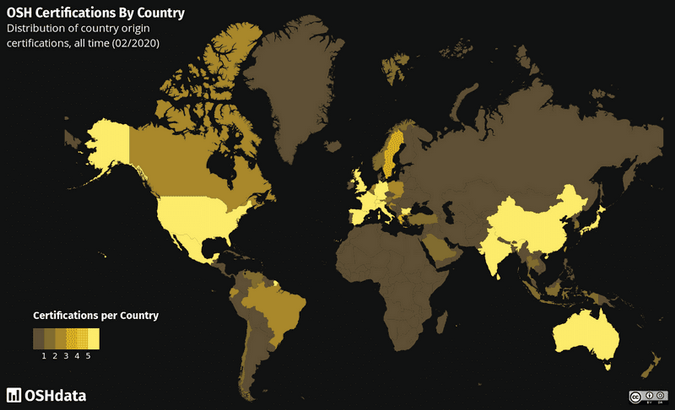
If you're interested in joining the conversation with open source hardware developers around the world, join the Open Hardware Summit Discord server, which has a dedicated channel for conversations about COVID-19. You can find roboticists, designers, artists, firmware and mechanical engineers, students, researchers and others working side by side. We hope to see you there.
The experienced service team and strong production support team provide customers with worry-free order services.

简体中文

繁體中文

English

日本語

한국인